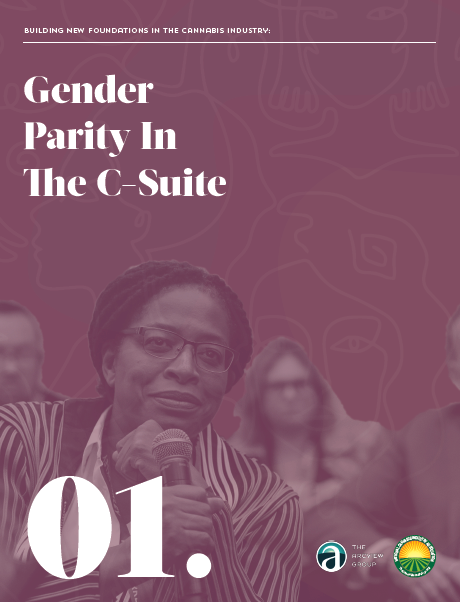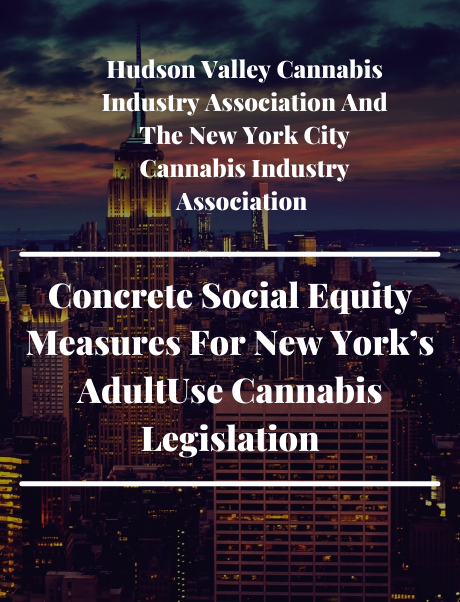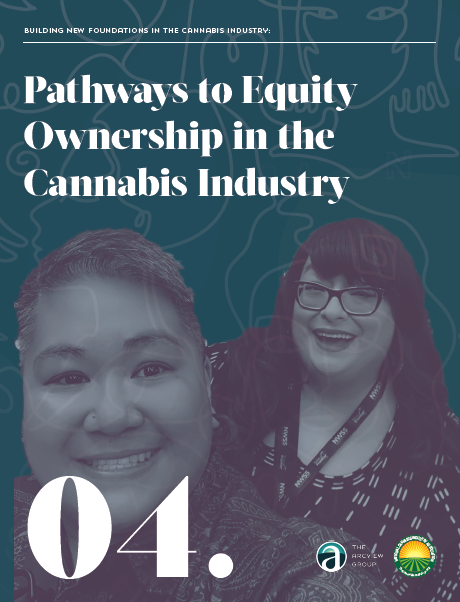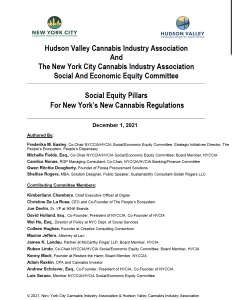Where We Stand on Cannabis Industry Policy
The People’s Pillars For An Equitable Cannabis Industry
Complete Amnesty
Legacy operators interested in transitioning into the legal cannabis industry need more than expungement. They need the ability to utilize current assets without prosecution.
Funding Reallocation
With the war on drugs and enforcement of cannabis criminalization being unnecessary, associated funds must be reallocated to repairing individual and community harm.
Rights Restoration
Those who were criminalized in many ways became second class citizens. Access to housing assistance, education grants, voting, and the ability to engage in the legal cannabis industry must be reinstated.
Equitable Service Access
In order to ensure minority owned businesses thrive, fair access to services such as banking, insurance and real estate is a must. Historic inequities must be acknowledged and addressed.
Stop Re-Criminalization
Police departments were incentivized to make arrests and confiscate assets. In cities where cannabis is now legal, arrests and harassment still occurs. The only way to reverse this norm is to implement consequences.
— Frederika Easley —
Director of Strategic Initiatives
“For over 50 years, lives have been taken, time has been lost, and communities have been devastated due to the disparate enforcement of policies attached to the war on drugs. Use of the term “Social Equity” must be more than a cliché. We are committed to advocating for the creation and implementation of policies and practices that hold systems of power accountable and support the repairing of harm to individuals and communities.”
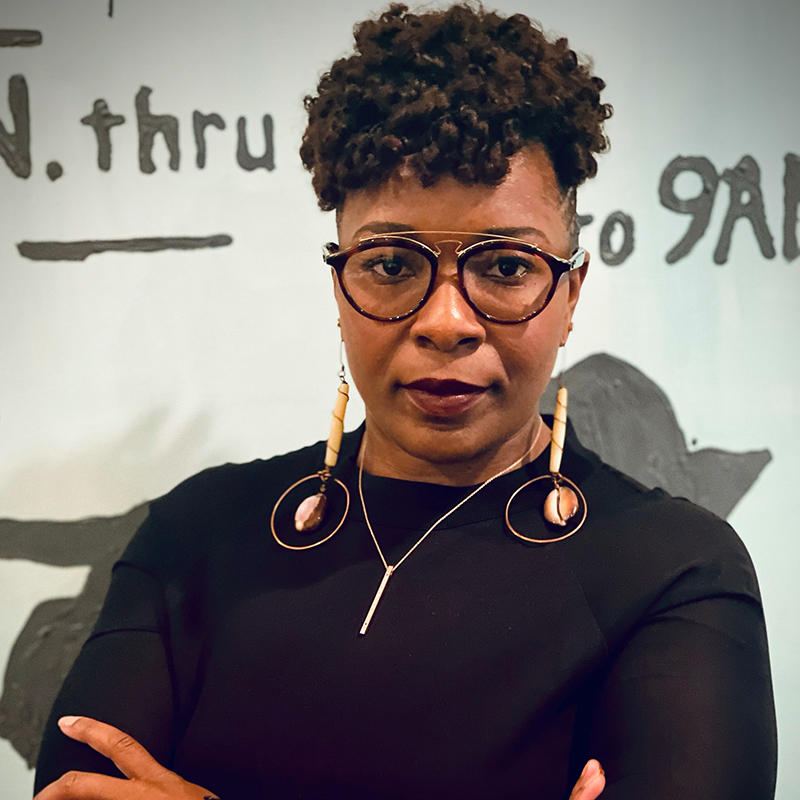
The War on Drugs: History, Present and Forward Movement
By Frederika Easley
How did the war on drugs start?
Prohibition has been used throughout history by the white majority to attack marginalized communities and to control resources they were not yet able to monetize.
The first anti-opium laws in the 1870s were directed at Chinese immigrants. The first anti-cocaine laws in the early 1900s were directed at black men in the South. The first anti-marijuana laws, in the Midwest and the Southwest in the 1910s and 20s, were directed at Mexican migrants and Mexican Americans.
Thought Pieces
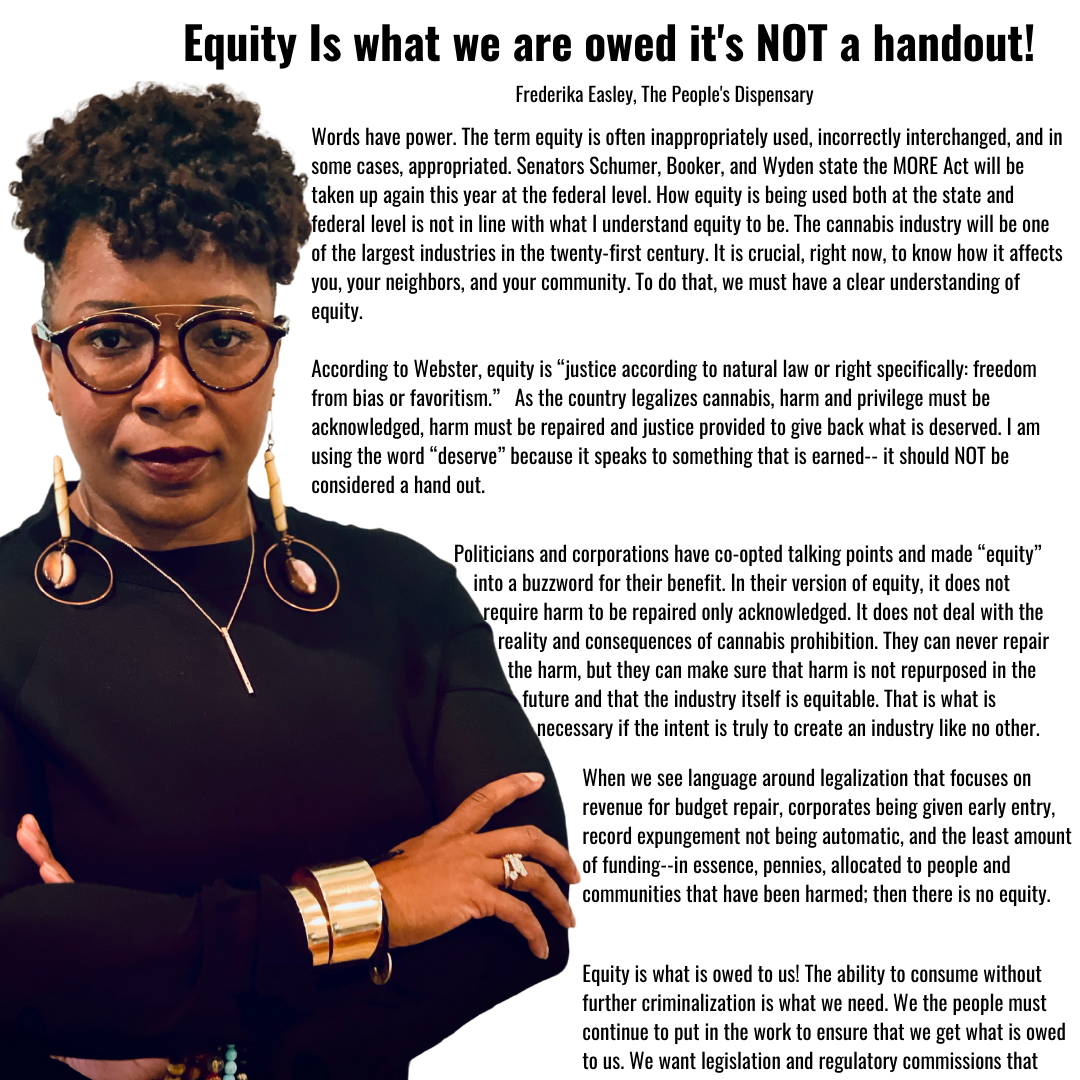
AMNESTY

POTENCY

MORE ACT
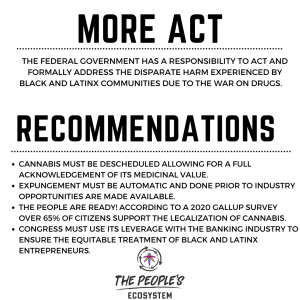
BANKING

The War on Drugs: History, Present and Forward Movement
How did the war on drugs start?
Prohibition has been used throughout history by the white majority to attack marginalized communities and to control resources they were not yet able to monetize.
The first anti-opium laws in the 1870s were directed at Chinese immigrants. The first anti-cocaine laws in the early 1900s were directed at black men in the South. The first anti-marijuana laws, in the Midwest and the Southwest in the 1910s and 20s, were directed at Mexican migrants and Mexican Americans.
What is the “War on Drugs”
The war on drugs is a campaign without boundaries that impacts relations worldwide. Its purpose is to reduce and eliminate the illegal sale and trade of unregulated drugs.
The Progression of it…
In June 1971 U.S. Pres. Richard Nixon declared drug abuse to be “public enemy number one” and increased federal funding for drug-control agencies and drug-treatment efforts. He pushed through policies like no-knock warrants and mandatory sentencing. This was in response to social upheaval and political dissent.
Nixon placed cannabis temporarily on the Schedule One list pending a commission review. He later ignored the commissions’ recommendation to decriminalize cannabis and in 1972 that placement stuck. This meant that cannabis was deemed to have no medical value and a high potential for abuse.
To paint a picture consider the following: Marijuana and heroin are Schedule One drugs. Cocaine, meth, and opioid painkillers are Schedule 2 drugs. Steroids and testosterone products are Schedule 3, Xanax and Valium are Schedule 4, and cough preparations with limited amounts of codeine are Schedule 5. Congress intentionally exempted alcohol and tobacco from the schedules in 1970.
There was a period in the 70’s where states exercised their power and decriminalized the plant but that trend ceased during the crazy “Just Say No” Reagan Era. Under his leadership, the “War on Drugs” expanded, and the number of people behind bars for nonviolent drug law offenses increased from 50,000 in 1980 to over 400,000 by 1997. Cannabis was roped in with Crack due to Schedule One status and therefore subject to the same zero-tolerance and mandatory sentencing policies.
This was exacerbated in 1992 under Pres. Bill Clinton with the introduction of the three strikes rule which mandated life sentences for repeat felony offenders. Then under Pres. George W. Bush we moved into students being tested and police departments being militarized. By the end of Bush’s term, there were about 40,000 paramilitary-style SWAT raids on Americans every year – mostly for nonviolent drug law offenses, often misdemeanors.
Opportunities to roll things back and make equitable changes were not done under Pres. Obama’s administration. Under Pres.Trump we saw an attempt to revitalize the energy of the Reagan Era, breathing life into the Say No campaign and enacting harsher sentences for drug law violations and life sentences for those who sell drugs.
What were the effects of the war on drugs?
Criminalization of drug users, excessive levels of imprisonment, and punitive sentencing practices, including mandatory sentencing, the death penalty and enforced ‘drug detention centers’, are some of the negative consequences of the 50-year ‘war on drugs’, a policy with direct impact on the vulnerable, poor and specifically Black and Latinx people.
According to the ACLU’s original analysis, marijuana arrests now account for over half of all drug arrests in the United States. Of the 8.2 million marijuana arrests between 2001 and 2010, 88% were for simply having marijuana. Nationwide, the arrest data revealed one consistent trend: significant racial bias. Despite roughly equal usage rates, Blacks are 3.73 times more likely than whites to be arrested for marijuana.
What does the war on drugs cost?
Most importantly it has cost lives, harmed the development of thriving minority communities and left in its wake generational trauma. In terms of financing, the War on Drugs, since 1971, has cost the United States an estimated $1 trillion. In 2015, the federal government spent an estimated $9.2 million every day to incarcerate people charged with drug-related offenses—that’s more than $3.3 billion annually.
Where are we now?
The 2020 election was inclusive of many ballot measures related to cannabis legalization and this trend has continued. There are now 18 states plus DC that have legalized adult-use cannabis and 36 states plus DC, Guam, The Virgin Islands and Puerto Rico have legalized medical use. Part of the push can be attributed to constituent pressure, according to a 2020 Gallup public survey, 68% of US citizens are in support of legalization. Additional motivation, however, must be attributed to unfathomable budget deficits due to our global pandemic. States are in need of the additional tax revenue that areas such as California and Colorado have benefited from for years.
Even with overwhelming public support and with dispensaries being considered “essential” during the pandemic this administration is taking a counter-productive approach specifically toward efforts to federally deschedule and legalize cannabis for both medical and recreational use. Through actions such as opposing cannabis research for veterans, retaining a rider in the presidential budget that prevents DC from using funds to legalize cannabis sales and allowing White House Staff who were honest about past cannabis use to be fired.
On one hand, and deservingly so, there is presidential support for the EQUAL Act, which aims to end sentencing disparities between cocaine and crack. There is also language in the budget proposal that aims to shift focus from drug criminalization to treatment programs and healthcare.
On the other hand, due to the inactivity of this administration and its failure to deschedule cannabis, criminalization of the plants’ consumers continues, with a disparate impact on Black and Latinx communities. According to a Forbes article, the FBI’s Uniform Crime Report, “more people were arrested for cannabis in 2019 than for all violent crimes put together. 545,602 people were arrested for cannabis related crimes…The vast majority of these arrests (92%) were for simple possession of the drug. 500,395 of those arrested for cannabis were simply found in possession of cannabis.”
Our Position
In response to the harm that has been caused by the war on drugs and disparate enforcement The People’s Ecosystem has developed five pillars that must be adopted in order to start healing and promote progress:
Amnesty- Complete freedom from prosecution and remembrance of cannabis activities and acquired assets.
Rights Restoration– Access to housing assistance, education grants, voting, and the ability to engage in the legal cannabis industry.
Funding Reallocation- With the war on drugs and enforcement of cannabis criminalization being unnecessary associated funds must be reallocated to repairing individual and community harm.
Deterrence of Continued Cannabis Criminalization- Police departments were incentivized to make arrests and confiscation of assets. Present day in cities where cannabis is legal arrests and harassment still occurs. The only way to reverse this norm is to implement consequences.
Equitable Service Access– In order to ensure BIPOC-owned businesses thrive, fair access to services such as banking, insurance, and real estate is a must. Historic inequities must be acknowledged and addressed.

